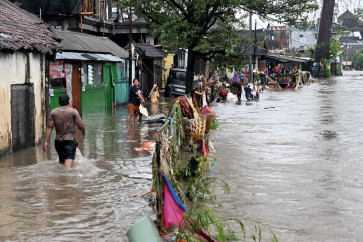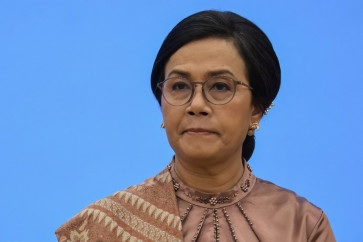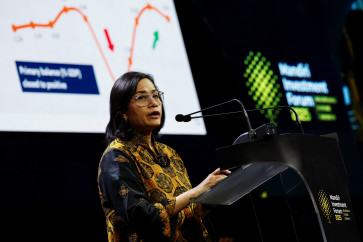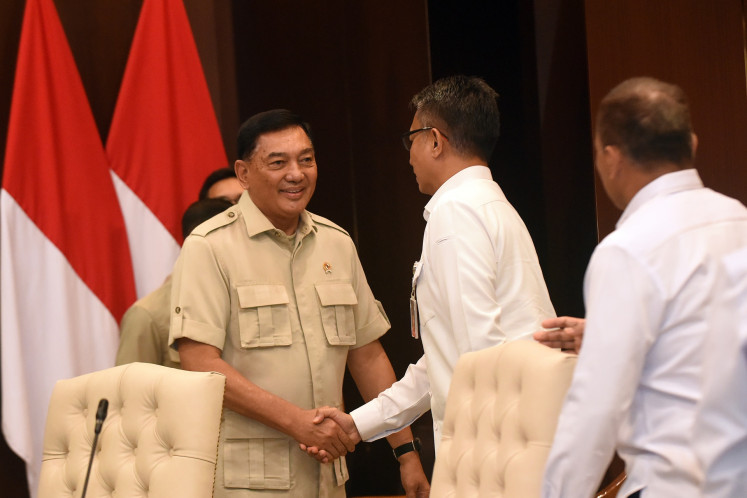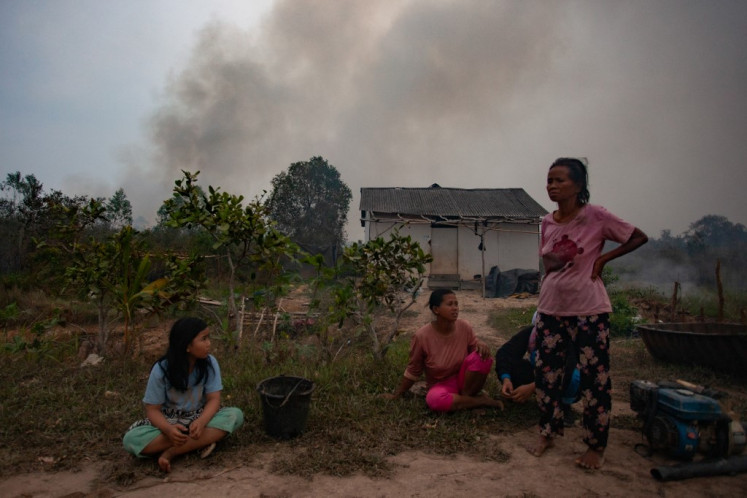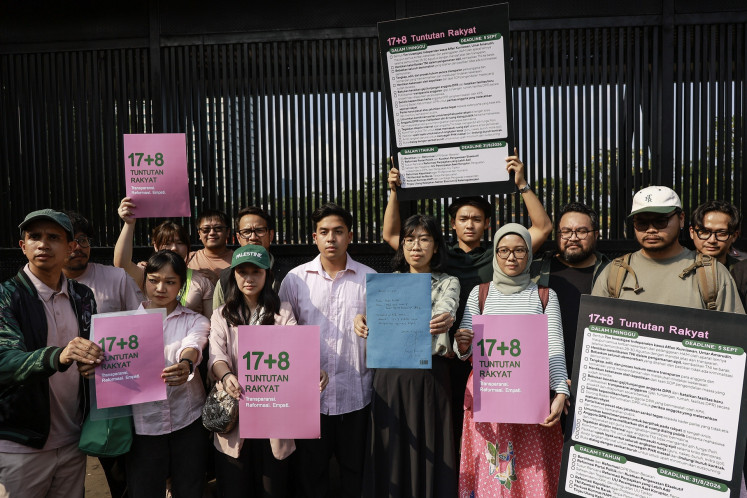Popular Reads
Top Results
Can't find what you're looking for?
View all search resultsPopular Reads
Top Results
Can't find what you're looking for?
View all search resultsInside the house of WR Soepratman
Tambaksari in the East Java capital of Surabaya is probably best known for its sports stadium
Change text size
Gift Premium Articles
to Anyone
Tambaksari in the East Java capital of Surabaya is probably best known for its sports stadium. It is little known that it was where Wage Rudolf Soepratman, the composer of Indonesia's national anthem 'Indonesia Raya' (the Great Indonesia), once lived.
WR Soepratman, who passed away on Aug. 17, 1938, once lived in a house located on Jl. Mangga 21, just some 150 meters across from Surabaya's popular sports complex.
Today the house serves as a memorial building under the management of Surabaya's Culture and Tourism Agency. Housewife Ariwanti is currently the caretaker of the house and she is assisted by her sister Purwanti, both living in Tambaksari.
'We're only in charge of maintaining the building so we can't describe its historical background,' said Ari, as she is better known.
Ari, who has worked in the house for four years, said despite its frequent upgrading and repainting, the building retained its original structure, especially the floors and rooms inside.
According to her, the area used to be a Dutch colonial civil service complex mostly with colonial styles of architecture.
The street where the memorial house is situated is only passable by small vehicles like pedicabs and motorcycles. Visitors going by car have to walk around 100 meters to reach the building.
WR Soepratman's house is a similar size to others in the neighborhood. Its distinguishable features are the higher roof and a statue of the composer with a violin standing two meters tall in the house yard. The sculpture was built by two artists ' Soerachman and M. Thalib.
Music on the wall: Original recording of the national anthem 'Indonesia Raya' (Great Indonesia) is framed and placed in one of the house's walls.
The modest house with brick walls and a wooden upper construction also has a small garden in the yard where various plants are grown. In the middle of the garden is a flagpole with the red-and-white national colors looking a bit lackluster.
The 10 meter by 5 meter building consists of three clean rooms, each equipped with a spotlight for its exhibits. The walls of the first room display a number of photos and copies of manuscripts, including several pictures of WR Soepratman's relatives and the text of 'Indonesia Raya'.
Other photos show the Black and White Jazz Band, a music group in 1920 with WR Soepratman, some Eurasians and indigenous players as members.
At 17, he was already fond of music, notably as a violinist and guitarist. Van Eldik (Sastromiharjo), his older brother-in-law who is also found in the pictures, taught him music.
In the second room, which is slightly smaller, are more copies of songs and books he wrote.
Apart from 11 songs and three volumes he penned, there are original lyrics of 'Ibu Kita Kartini' ' a song about national heroine Kartini. Initially titled 'Raden Adjeng Kartini', it was written in 1929.
Also on display are the photos and two genuine phonograph records of 'Indonesia Raya' as well as a copy of the Mahaputra Utama Award for Merit from former president Soeharto. Like the Kartini lyrics, the award has also been affected by moisture and mold.
The third room has several photos of his family tree, showing that the violinist never got married and never adopted any children.
A picture of him, as commonly found in school textbooks, is shown on a special stand. This image was once printed on the 1999 issue of the Rp 50,000 banknote.
Well-preserved: Original copy of the national anthem's lyrics is displayed at the house.
Other exhibits depict the relocation of his grave from the Kapas Cemetery north of Jl. Kenjeran to Jl. Tambak Segaran Wetan south of Jl. Kenjeran, Surabaya.
The burial site is located around 1 kilometer from the memorial house. A replica of his violin is shown in a glass box, while the genuine one is kept at the Youth Pledge Museum in Jakarta.
This violin was used in composing 'Indonesia Raya', which was sung before participants of the Second Youth Congress at Gedung Kramat 106 Jakarta on October 28, 1928. The Indonesian government finally adopted 'Indonesia Raya' as the national anthem through Government Regulation No. 44/1958.
Each of the rooms has a window, with only a front entrance door and a back door, all being in the original form. There are no room doors, though. 'Perhaps because WR Soepratman lived alone here, the rooms only have curtains,' said Ari. In the backyard is a renovated bathroom for visitors.
Some notice boards are on the front wall, one of which carries the place and date of birth of WR Soepratman, in Jatinegara on March 9, 1903. The name Wage is said to have been derived from his birth date, Monday Wage, one of the days in the Javanese calendar's five-day week.
The birth data, in fact, remains controversial due to the claim that he was born on March 19, 1903 in Trembelang hamlet, Somongari village, Kaligesing district, Purworejo regency in Central Java.
This view, while supported by Soepratman's kin, was backed by the decision of the Purworejo District Court on March 29, 2007. Yet March 9 was already declared National Music Day by former president Susilo Bambang Yudhoyono in 2013.
Although the guest book indicates that most visitors expect this heritage building to be well preserved, according to Purwanti, only on certain days ' particularly Heroes' Day which falls on Nov. 10 ' does this historic place have a lot of guests, mostly school students and government officials.
Sadly, the building is not open to the public all the time. Interested parties are advised to contact the Surabaya Culture and Tourism Office by phone and it will then instruct Ari to welcome the guests.
'Our main consideration is only security because no guards are assigned to watch over the house,' said Ahmad Miqdad, head of the History, Museum and Cultural Heritage Section of the Surabaya Culture and Tourism Office.
In his view, Soepratman's house is not a museum, which requires its own organizational structure.
'So the memorial house is a cultural heritage building that keeps a number of historical documents,' he explained. 'But we will provide guides for individual or group visitors wishing to get detailed historical information.'
The memorial house thus becomes one of Indonesia's important historical records 'hidden' in a corner of Surabaya, as implicit in WR Soepratman's message two days before his passing: 'It's my destiny, as desired by the Dutch East Indies government. Let me pass on with sincerity. I've devoted my life and struggled in my own way. I'm sure Indonesia will gain independence.'
Passion for jazz: WR Soepratman (third left) is shown in the picture of his band Black and White Jazz from sometime in 1920s.
' Photos by Nedi Putra AW





